There are people who travel because they want to push themselves to physical limits, some who wish to walk across deserts; jetting across Egypt’s Valley of the Kings or the Golden Savannah of Kenya, and then there are people who are just genuinely curious about the world. People you meet while on the road become some of the most valued names on your contact list.
Travel to escape the chaos of life, unplug yourself no matter where you are… roaming the narrow lane and alleys of Brera, the artistic heart of Milan or drifting over the Grand Canal in a Gondola; hiking the Bavarian Alps or savoring caffeine and creamy kipferl in a traditional coffee house in Budapest; stepping over the amazing Machu Picchu or wandering the intoxicating city Marrakech; scuba diving at Bunaken Marine park or knowing the unknown ‘The Maasai’… reconnect to what you really love.
Brera Milan, Italy
Brera is synonymous with the artistic heart of the city. Narrow lane and alleys filled with unique shops and restaurants, history and charm, in fact, strolling along the streets of this ancient district, one cannot help but be enchanted by its almost surreal atmosphere boasting small artisan’s workshops or quaint stores selling canvases and paints. Home to the impressive Accademia di Belle Arti, which inspires you to admire Milan’s famous painting collection at the Pinacoteca, the historic Biblioteca Nazionale Braidense, the Museo Astronomico, the oldest scientific research institute in the city and the Giardino Botanico, an evocative green space located.
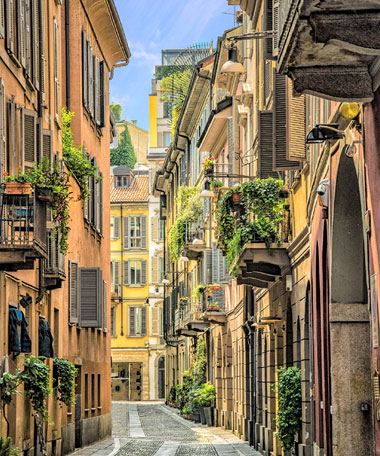
Venice, Italy

Also known also as the “City of Canals,” “The Floating City,” and “Serenissima,” is arguably one of Italy's most picturesque cities. Located in the Veneto region of Italy, this ancient and historically important city was originally built on 100 small islands in the Adriatic Sea. Venice relies on a series of waterways and canals.
The grand Canal thoroughfare is the most famous areas of the city, which was a major center of the Renaissance. The central square in Venice is called the Piazza San Marco, which has a range of Byzantine mosaics, the Campanile bell and, of course, the stunning St. Mark’s Basilica.
Bavaria Alps
Stretching from Germany to Austria, the Bavarian Alps (Bayerische Alpen) form a stunningly beautiful natural divide along the border. The plain merges into the foothills, which suddenly give way to jagged Alpine peaks, and that the impact is all the more spectacular. The Fir-clad mountains, rocky peaks, lederhosen, and geranium-covered houses, the Bavarian Alps is envisaged by many as "Germany." Quaint towns full of frescoed half-timber houses covered in snow pop up among the mountain peaks and shimmering hidden lakes.
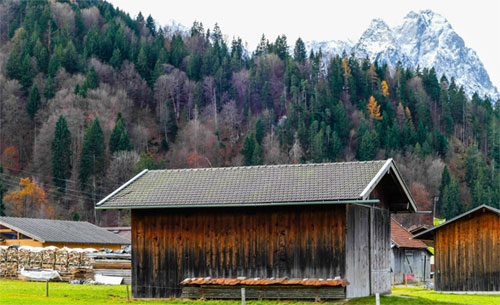
Continuing south, you will encounter the cheerful villages with richly painted houses, churches, and monasteries filled with the especially sensuous Bavarian baroque and rococo styles, and several salt deposits in the area have created a spa culture, unwind and relax as you "take the waters." Enjoy some of the best sport in Germany. Downhill and cross-country skiing, snowboarding, and ice-skating in winter; tennis, swimming, sailing, golf, and, above all (sometimes literally), hiking, paragliding, and ballooning in summer.
Alhambra Granada, Spain

Sitting atop a rocky hill along the banks of the River Darro, the high-walled Alhambra complex is a focal point of the city of Granada. It is located just west of the Andalusian city, on about 35 hilly acres in southern Spain.
The name Alhambra has its origins in an Arabic word meaning "red castle or vermilion", perhaps due to the color tone of the towers and walls that completely surround the hill of La Sabica, which under the light of the stars is of silver color, but in the light of the sun acquires a golden tone.
A UNESCO World Heritage Site, this medieval complex encompasses a palace, fortress, and gardens, of the Moorish monarchs of Granada. Designed as a military zone at the beginning, the Alhambra became the royal residence and court of Granada in the mid-13th century.
Plaza de España, Seville Spain
Framed in the María Luisa Park, the Plaza de España is a spectacle of light and majesty. Designed by the great Seville architect Aníbal González as an emblematic space for the 1929 Ibero-American Expo. it has a total area of 50,000 square meters, without a doubt is one of the most imposing plazas in Spain. Along the entire perimeter of the plaza, in the canal, you can travel by boat, a truly romantic experience.

Keukenhof, Netherland

Keukenhof, also known as the Garden of Europe, is one of the world's largest flower gardens. Keukenhof can be reached within half an hour from The Hague, Haarlem, Leiden and Amsterdam.
Every year, more than 7 million bulbs are planted by hand in the autumn to flower in spring. There are a variety of 800 different tulips. A fantastic collection of: tulips, hyacinths, daffodils, orchids, roses, carnations, irises, lilies and many other flowers, an overwhelming spectacle of colors and perfumes.
Keukenhof has a different theme each year, meaning that it is never the same. Unique in the world, this park attracts over a million visitors every year. The tulips bloom only from mid-March to mid-May, meaning that the park is only open during this period, so plan your visit in advance.
The National Palace of Pena, Sintra Portugal
The National Palace of Pena, stands out as the renowned jewel in the crown of the Sintra Hills. The surrounding park, in close harmony with the magical character of the palace, triggers the emotions of mystery and discovery. In its nooks and corners, our gaze gets lost amongst its charms.
The colored tones of the palace, the pinnacle of Romanticism in Portugal and the eternal legacy of Ferdinand II, the King-Artist, opens the doors to the imagination of all those who cross its threshold, with the infinite shades of green painting the surrounding park, establishing an idyllic scenario, frequently hidden under the veil of the mists that characterize the Sintra Hills. As if having stepped out of a fairy tale, this has been the place of dreams for all the generations who have passed here and gazed upon its magnificence.
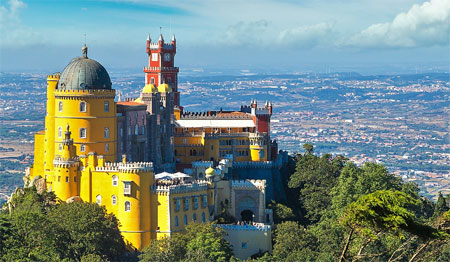
Budapest, Hungary
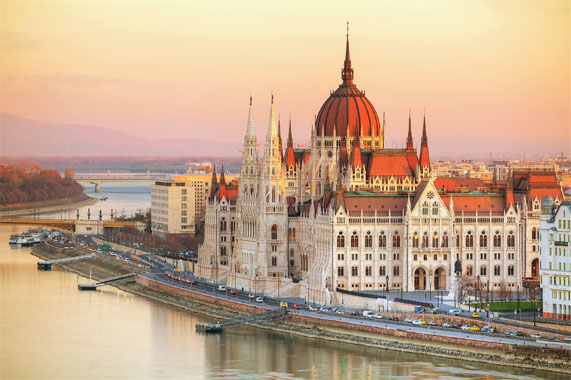
Draped along the banks of the Danube, with the Buda hills as a backdrop, the natural beauties of Budapest are bountiful. Crowned with grand fin de siècle and art nouveau architecture, it holds itself as one of the Europe’s most striking city. Savoring caffeine and creamy kipferl in its majestic traditional coffee houses merely sets the tone for a city that revels in the high culture of world class galleries, classical music and literary theatre. Budapest has something for everyone – from dramatic history and flamboyant architecture to healing thermal waters and a nightlife that is unrivalled in Eastern and Central Europe.
Stockholm, Sweden
Stockholm, the capital of Sweden, is a Nordic vision of waterways, parks and spire-filled skylines, which is justifiably renowned as one of the most handsome cities in Europe. Stockholmers call their city 'beauty on water'. But despite the well-preserved historic core, Stockholm is no museum piece: it's modern, dynamic and ever-evolving. The expanse of the city is spread over no less than fourteen islands and surrounded by literally thousands of smaller, rocky islets, it combines the drama and open skies of Scandinavia with the verve, dynamism and urban cool of western Europe.

French Riviera

At the heart of Europe, between the Southern Alps and the Mediterranean, prepare to be amazed by the Côte d'Azur, or French Riviera. The Nice Carnival, Monte Carlo Beach, Cannes Film Festival and St. Tropez are just a few reasons why the French Riviera is a popular destination for celebs, royals and jetsetters. The southeast coast of Provence, France, is sprinkled with some of the world’s most popular beaches and destinations, including Monaco, Nice, Cannes and Saint Tropez. Many celebrities, such as Elton John and Brigitte Bardot, have homes in the region.
Santorini, Greece
Santorini is the supermodel of the Greek islands, a head-turner whose face is instantly recognizable around the world: multicolored cliffs soar out of a sea-drowned volcanic crater, topped whitewashed buildings. With its reputation for dazzling panoramas, romantic sunsets and volcanic-sand beaches, it’s hardly surprising Santorini features on so many travelers’ bucket lists.
Santorini islands is still an active volcano (the same as Methana, Mílos and Nisiros) and probably the only volcano in the world whose crater is in the sea. Santorini is considered to be the most sought after place for a romantic getaway in Greece, since there are not many places in the world where you can enjoy exquisitely clear waters while perched on the rim of a massive active volcano in the middle of the sea!

Marrakech, Morocco
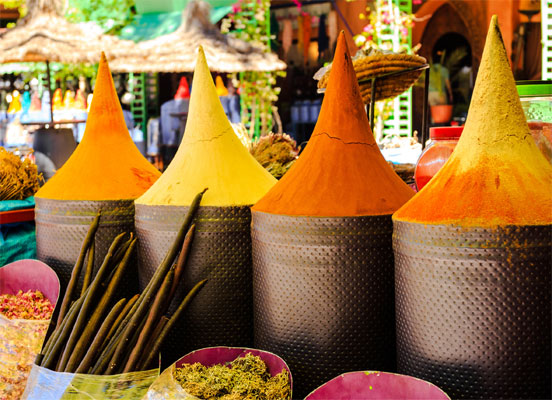
Marrakech aka Marrakesh, is an intoxicating city known for its souks, spices and snake charmers, though these days it is also prized as much for its trendy art galleries, classy boutique hotels and luxurious hammams. The city offers a panoramic canvas to its visitors, a tantalizing taste of Africa within the easy reach of Europe and allows them to immerse in a world where the hubbub of modern life whirs around its rich cultural traditions. Most of the travelers naturally gravitates towards the Medina, this UNESCO listed site has been welcoming Berber merchants and weary travelers since the 11th century. Today, its rich architecture from yesteryears - the Koutobia Mosque, Bab Agnaou, gardens, monumental ramparts and gates still mesmerize the travelers…
Machu Picchu, Peru
Tucked away in the rocky countryside northwest of Cuzco, Peru, Machu Picchu is believed to have been a royal estate or sacred religious site for Inca leaders, whose civilization was virtually wiped out by Spanish invaders in the 16th century.
For centuries, until the American archaeologist Hiram Bingham stumbled upon it in 1911, the abandoned citadel’s existence was a secret known only to peasants living in the region.
The site stretches over an impressive 5-mile distance, featuring more than 3,000 stone steps that link its many different levels. Today, hundreds of thousands of people tramp through Machu Picchu every year, braving crowds and landslides to see the sun set over its towering stone monuments and marvel at the mysterious splendor of one of the world’s most famous manmade wonders.

Oaxaca, Mexico

The state of Oaxaca (wah-hah-kah) has a special magic felt by the natives and the foreigners alike. A bastion of indigenous culture, it’s home to the country’s most vibrant crafts and art scene, some outstandingly colorful and extroverted festivities, a uniquely savory cuisine and diverse natural riches. This region, and the city in particular, is widely known for its mezcal, chocolate, and mole. Candy-colored buildings line the streets, each as lively as the next. The region's many indigenous groups sell a variety of unique crafts and textiles, and the smells emanating from the markets will surely tempt you with some of Mexico's most flavorful dishes. Combined with a temperate climate and a supremely walkable layout, Oaxaca is easy to love and hard to leave.
Iguazú Falls – The World’s Largest Waterfalls
It is often said that Argentina provides the show and Brazil enjoys the view of the Iguazú Falls with Brazil dominating the panoramic side having several viewing walkways!
So, which is the best side?
Iguazú Falls sits right at the border of Brazil and Argentina with both countries claiming to provide the best Iguazú experience. The Brazilian side provides a more stunning panorama, but the Argentine side has more vantage points from where you can actually get up close and personal with the falls.
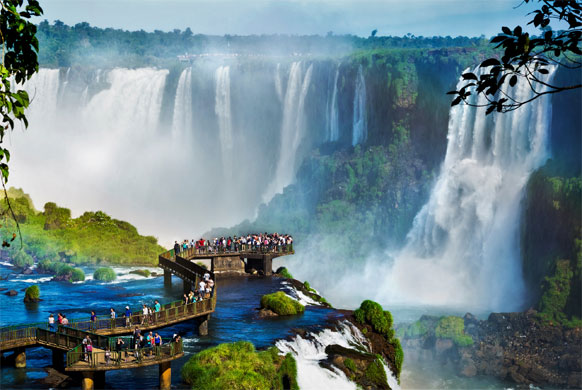
Also known as the Iguassu Falls and the Iguaçu Falls, the term Iguazú means ‘great waters’ in Tupi and Guarani language. Taller than Niagara and wider than Victoria, the Iguazú Falls are the result of a volcanic eruption that left a large crack in the earth. The waterfall system consists of 275 falls along 2.7 km (1.67 miles) of the Iguazú River.
Masai Mara

Arguably the most popular nature park in Kenya, Masai Mara National Reserve is near the country’s southern border and spills over into neighboring Tanzania. This is home for East Africa’s most iconic wildlife, including lions, elephants, leopards, zebra and giraffes and of course the epic Great Migration. Every July and August, more than a million wildebeest and herd animals migrate to the 1,510 sq. km of open rolling grasslands.
The Masai Mara hosts of rolling hills, sprawling savannahs, dramatic river crossings and of course warm and welcoming ‘The Maasai’. Maasai means people speaking ‘Maa’.
The Maasai have always been special, their bright red robes set them apart visually. Spear in hand, they are calm and courageous regardless of the danger. “The Maasai” for many people is not just the highlight of their Kenyan adventure, but the very reason they came in the first place. Come home to the land of Golden Savannah!
Angkor Wat, Cambodia
Angkor Wat, an enormous Buddhist temple complex located in northern Cambodia. Originally built as a Hindu temple, spreads across more than 400 acres, Angkor Wat is said to be the largest religious monument in the world. Its name, which translates to “temple city” in the Khmer language of the region, references the fact it was built by Emperor Suryavarman II, who ruled the region from 1113 to 1150, as the state temple and political center of his empire.
Angkor Wat, in its beauty and state of preservation, is unrivaled. Its mightiness and magnificence bespeak a pomp and a luxury surpassing that of a Pharaoh or a Shah Jahan, an impressiveness greater than that of the Pyramids, an artistic distinctiveness as fine as that of the Taj Mahal.

Bunaken, Indonesia
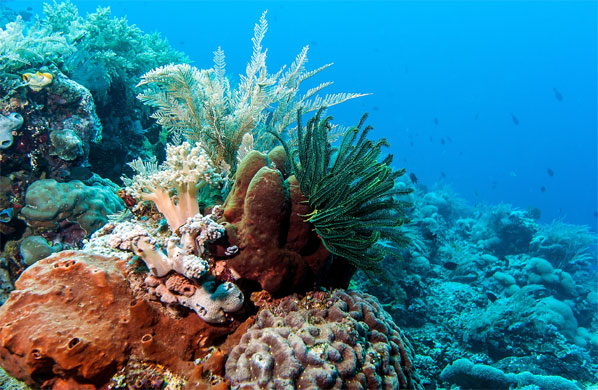
Indonesia is, by many, regarded as being the epitome when it comes to dive sites and the diving and Bunaken Marine Park does everything to uphold Indonesia’s prestigious reputation. The crystal clear waters of the Bunaken enable people to clearly view the numerous sea biota. Multiple species of coral reefs in this park, dominated by edge ridges and block ridges of rocks.
For scuba diving lovers, this is a great place to be. About 20 dive spots to choose from, it offers a vivid choice to the divers for a chance to swim under the sea, and admire the mesmerizing sea life.
Steep walls are marked with deep crevices, sea fans and giant sponges. The shallows are filled with fishes. The wall, often protected from stronger currents, is frequented by bump head parrotfish, turtles, and Napoleon wrasses. One can explore the island on foot or can take a boat to move from one dive site to the other, just walking around the beach is already a most enjoyable experience.
Bunaken is a small island in North Sulawesi and it is one of 5 islands which make up the Bunaken Marine Park, which was one of the first marine protected areas declared in Indonesia.
Hoi An, Vietnam
Graceful, historic Hoi An is Vietnam’s most atmospheric and delightful town. It is an exceptionally well-preserved example of a South-East Asian trading port dating from the 15th to the 19th century. Its buildings and its street plan reflect the influences, both indigenous and foreign, that have combined to produce this unique heritage site. The town reflects a fusion of indigenous and foreign cultures (principally the Chinese and Japanese with later European influences) that combined to produce this unique survival. Once a major port, it boasts the grand architecture and beguiling riverside setting that befits its heritage, and the 21st-century curses of traffic and pollution are almost entirely absent.
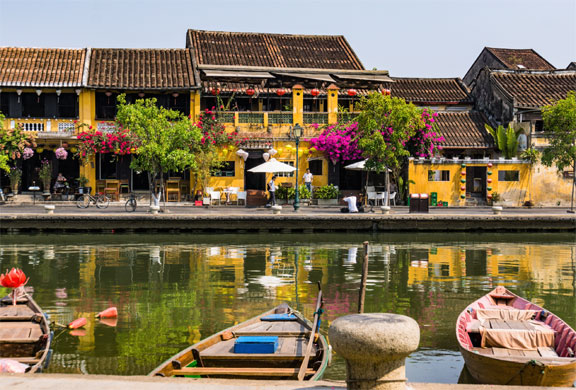
Baku, Azerbaijan

Baku (or Bakı in Azeri) sits at the historical, cultural and business center of this West Asian country. Aptly nicknamed the City of Winds, Baku’s location on the western shore of the Caspian Sea subjects it to strong winds throughout the year while also gracing the city with gorgeous seaside views. With a population of over 2 million people, Baku is the largest city on the Caspian Sea and in the entire Caucasus region. Its architectural mapping has plenty of Soviet genes floating half-hidden in the background.
At its heart, the UNESCO listed İçəri Şəhər (Old City) lies within an exotically crenellated arc of fortress wall. Around this are gracefully illuminated stone mansions and pedestrianized tree-lined streets filled with exclusive boutiques. Meanwhile, romantic couples canoodle their way around wooded parks and hold hands on the Caspian-front bulvar (promenade), where greens and opal blues make a mockery of Baku’s desert-ringed location.

